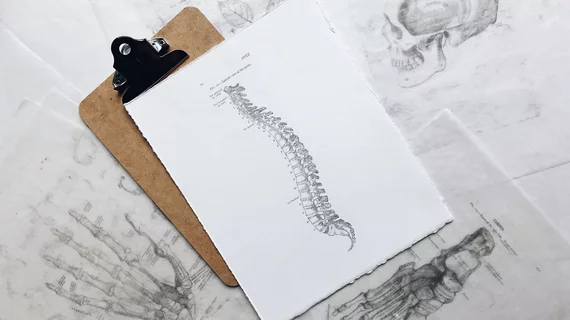Death twice as likely for COVID-19 patients with spinal fractures, imaging analysis reveals
Clinicians in Italy are urging their peers to gather thoracic x-rays from COVID-19 patients to help address a powerful predictor of death.
In a small study published Wednesday, physicians noted that the combination of vertebral fractures and the novel coronavirus made patients’ mortality rate double. Such breaks typically occur when parts of the spine collapse—often stemming from osteoporosis—and can lead to pain, deformity and loss of height, according to their study.
“Vertebral fractures are a marker of frailty, and for the first time we show that individuals who have such fractures appear to be at increased risk of severe COVID-19,” corresponding author Andrea Giustina, MD, director of the Institute of Endocrine and Metabolic Sciences of the San Raffaele Vita-Salute University in Milan, Italy, said in a statement. “A simple thoracic x-ray can detect these fractures and morphometric evaluation should be performed in COVID-19 patients at hospital admission.”
To perform their analysis, Giustina and colleagues analyzed x-rays from 114 patients with the virus, detecting thoracic vertebral fractures in more than 35%. These patients were typically older, more likely to require a ventilator and twice as likely to die when compared to others without such spine issues. And that mortality rate climbed even higher for patients with severe fractures.
The team noted that vertebral fractures can influence cardiorespiratory function and disease outcomes and serve as an “easy-to-measure clinical marker of fragility and poor prognosis.”
“We suggest that morphometric thoracic vertebral evaluation should be performed in all suspected COVID-19 patients undergoing a chest x-ray,” Giustina et al. concluded.
Read more of their results in the Journal of Clinical Endocrinology and Metabolism here.

